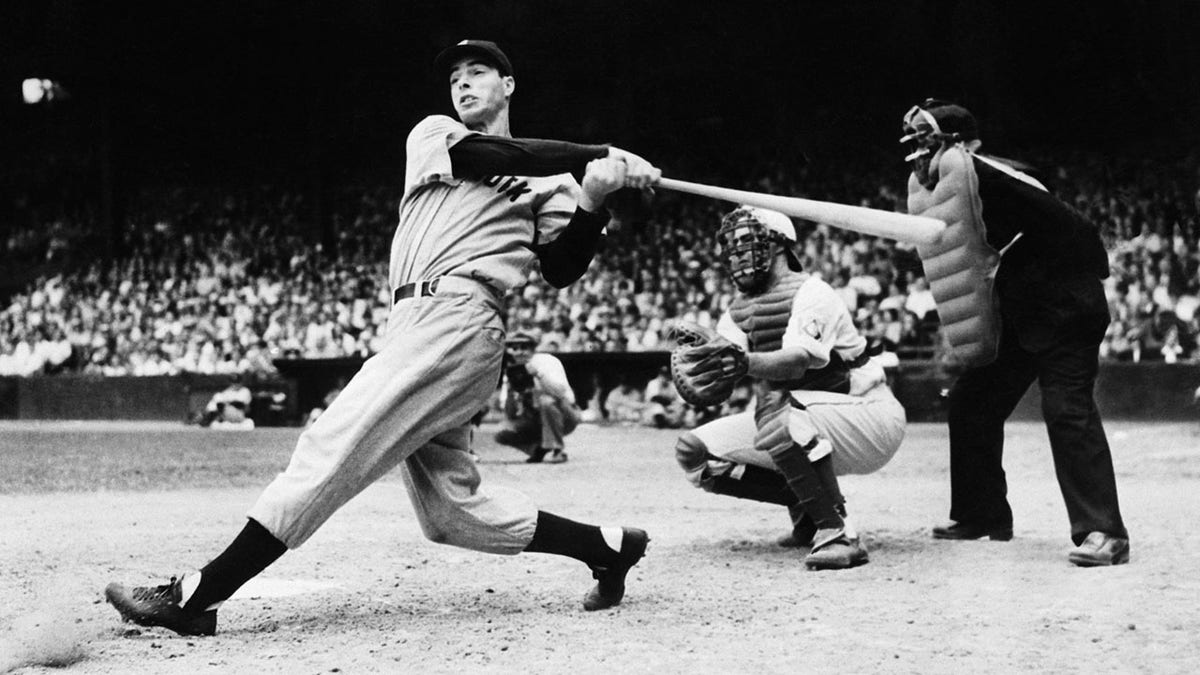Long-forgotten Daniel 'Doc' Adams is the true 'father of baseball'—here’s his grand-slam story
Doc Adams shaped the national pastime more than any other individual, but his name was lost to history. Baseball enthusiasts are now rallying behind his legacy, saying he deserves America’s acclaim and a spot in the Hall of Fame.
Over 500 home runs in Major League Baseball since 2010 can be attributed to climate change, a new study that has attracted widespread media attention claims.
The study claimed that the upward trend in home runs in professional baseball is owed in part to rising temperatures making air less dense and allowing baseballs to travel farther when hit. Scientists acknowledged, however, that there are other factors as well to account for the increased amount of home runs in baseball.
It predicted that rising temperatures could end up accounting for 10% of all home runs that will occur this century, provided climate change solutions aren’t implemented.
JOE MANCHIN BLASTS BIDEN ADMIN FOR CEDING CONTROL TO CCP ON GREEN ENERGY: 'PATHETIC'

Aaron Judge #99 of the New York Yankees hits his 62nd home run of the season against the Texas Rangers during the first inning in game two of a double header at Globe Life Field on October 4, 2022 in Arlington, Texas. Judge has now set the American League record for home runs in a single season. (Photo by Ron Jenkins/Getty Images)
The Dartmouth study, which was published in the Bulletin of the American Meteorological Society on Friday, sought an answer to why the last 13 years have seen an upswing in the number of homers. According to the numbers, the time period has seen hundreds of more home runs compared to its preceding decade.
Chris Callahan, lead author of the study and a doctoral student in climate modeling and impacts at Dartmouth College and avid baseball fan, told CNN that "strong" evidence showing climate change affecting batting distances "surprised" him.
Callahan stated, "I remember being surprised at how strong the finding was. We’re not saying that every home run now is because of climate change, but you take the data and slice it any way you want, you find the same thing."
He added, "And as a fan, I indeed am a little bit frustrated that home runs may continue to dominate, as it does now."
The study claimed that due to warmer temperatures making air less dense, balls were able to carry farther in the air and thus more likely to leave the yard.

Joe DiMaggio is pictured as he smashed out his second homer in the first game of the Yankees double header with the Philadelphia Athletics. Joe and the other Yankee sluggers made baseball history when they clouted out eight four-baggers in the first game and five in the second game, breaking all existing home run records. (Getty Images)
The study’s co-author, Dartmouth assistant professor of geography Justin Mankin, corroborated the science behind the phenomenon, saying, "Passenger jets fly at 30,000 feet, because air density is really low up there, and it just means that planes are more efficient, given the same fuel."
He added, "We don’t fly passenger jets low in the atmosphere because there’s just so much more stuff in the way."
The study’s methodology involved the researchers analyzing "more than 100,000 MLB games and 220,000 individual hits" and overlaying those numbers with data about "unseasonably warm temperatures" the CNN piece explained. They found a "clear connection" between home run numbers and rising temperatures.
The study found that "games that were held in open stadiums during the day, when the sun is out, saw a spike in home runs, while games held at night or in domed stadiums would see a smaller number of home runs."
Their observations allowed them to propose that for every one degree Celsius increase in temperature, the number of home runs in a game goes up almost 2%.
CLICK HERE TO GET THE FOX NEWS APP
The phenomenon would make it so that outdoor locations, like Chicago Cubs’ open-air Wrigley Field, would see a rise in home runs as the temperatures increased over time, whereas a domed stadium like Tropicana Field of the Tampa Bay Rays would not see a significant increase.

William Contreras, shown here with the Atlanta Braves last season, is one of the league's top power-hitting catchers. (Kevin D. Liles/Atlanta Braves/Getty Images)
Beyond inclement weather, climate change has been cited as a factor in a number of trends and societal ills, including hate speech, obesity rates, the rise of the Islamic State terrorist group and violent crime.


